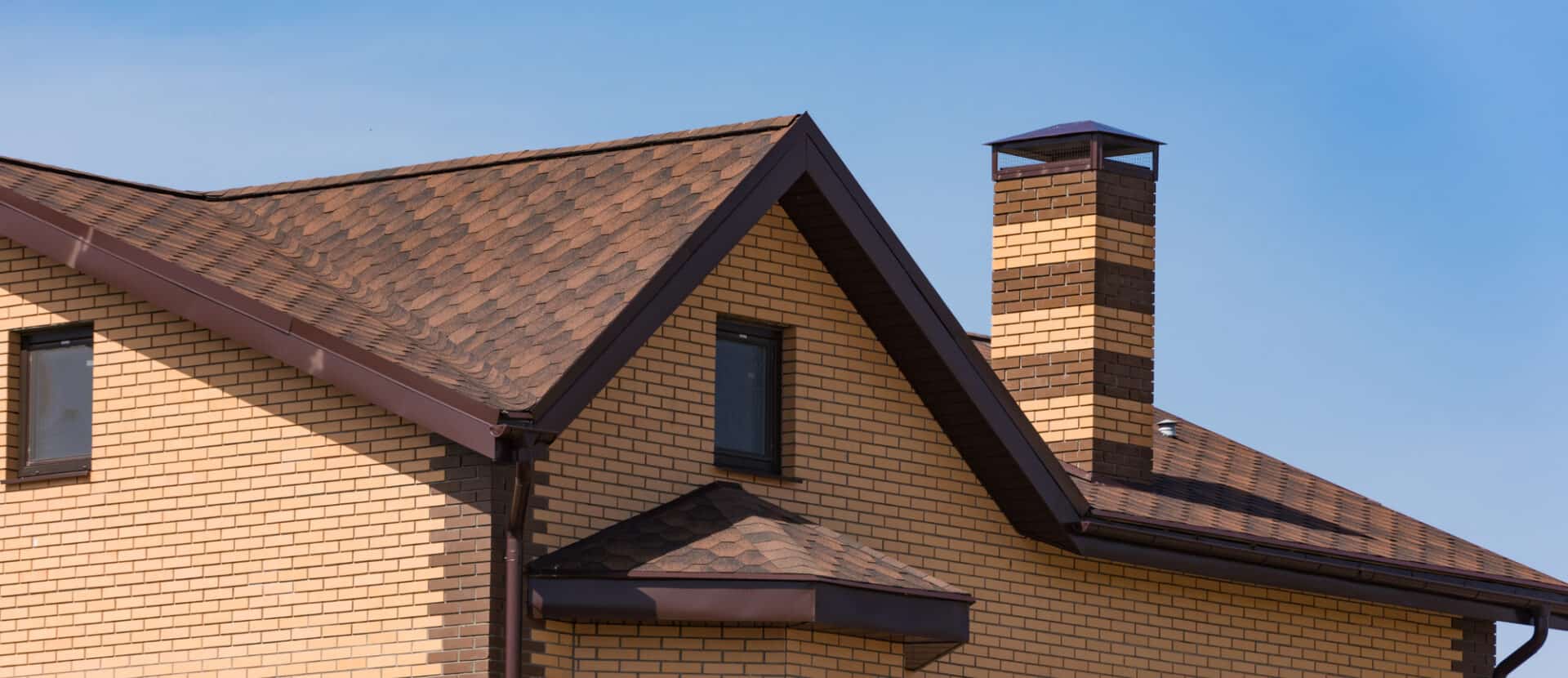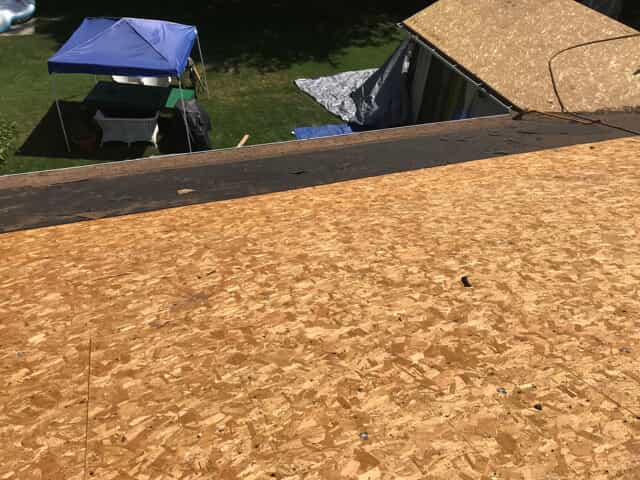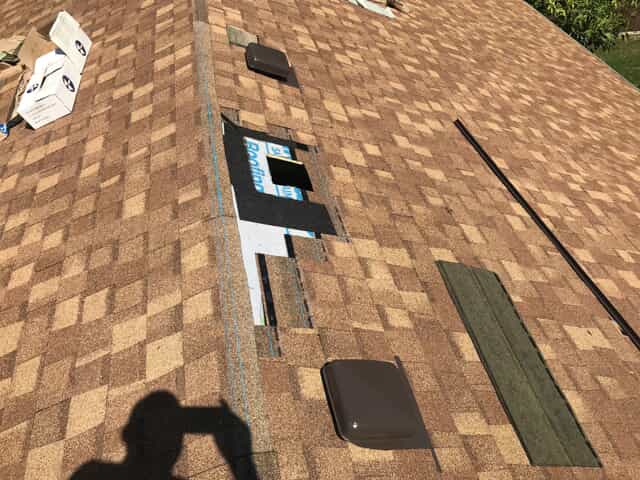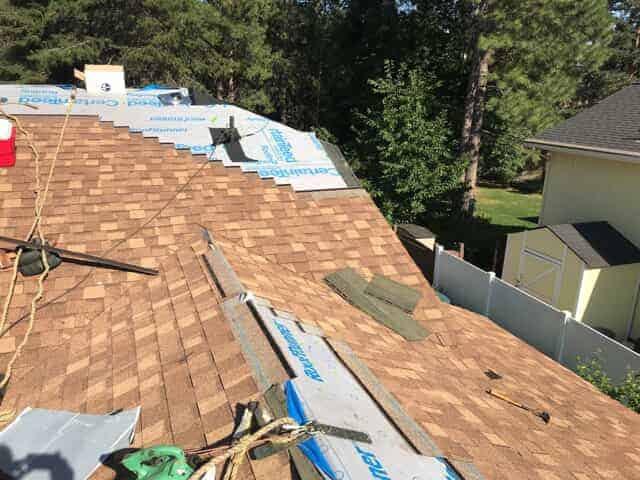On this face, you can see three basic layers that comprise the roofing system – higher up, the roof has been stripped down to the plywood sheeting (or sheathing); a bit lower, you can see the paper felt underlayment that helps protect the sheeting, and below that, the remaining layer of shingles. It’s important to pull out all the existing fasteners (nails and staples) so that they do not show up through the new material over time. This happens quite often, and water always finds a way in.
Using harnesses, ropes and anchors, the crew is safely tied in at the ridge until the final shingles are installed. Tools are clipped on and materials are kept on the ridge or in valleys to keep them from sliding off the roof.
Another leak-prone area on the roof is around all can vents. To help keep these areas sealed, New Heights Roofing installs a high-grade ice shield that seals down and creates a water-tight gasket around fasteners. This is a second layer of protection that will keep the home dry years down the road.
Finishes include new flashings at the plumbing pipe and attic vent, specialized ridge and hip cap (CertainTeed Shadow Ridge) and the use of gasketed screws instead of nails for the final ridge piece. After years of exposure, the less-aggressive nails will rust and back out of the material, allowing for water to come in.
A closer look at CertainTeed Landmark shingle in the ‘Reshawn Shake’ color. The shingles have a resemblance to wood shake from the ground, different from many straight or reverse-angle tabs, and much better than the 3-tab option.




